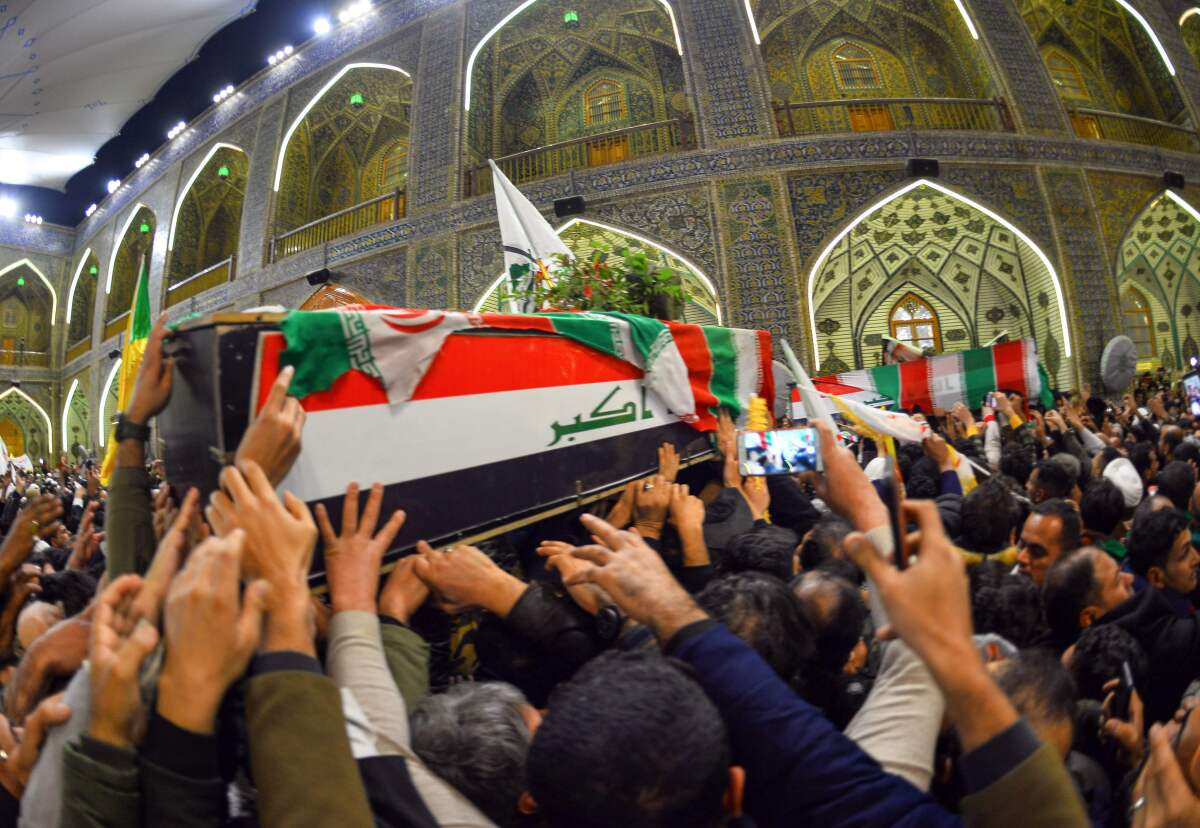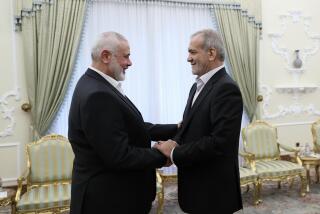Trump is winging it with Iran. The results do not look good

- Share via
Now that a few days have passed since last week’s targeted killing of a senior Iranian general, it’s becoming clear that President Trump didn’t take this enormously provocative step as part of a carefully calibrated long-term strategy for dealing with Iran’s hostile adventurism in the Middle East. Instead, it appears that he behaved as we worried he would from the start of his presidency — by following his gut and allowing his reckless, belligerent, bullying style to be applied to something that truly matters.
Unfortunately, this time the stakes are really high.
For the record:
9:33 a.m. Jan. 7, 2020An earlier version of this editorial incorrectly stated where protesters had recently besieged a U.S. embassy. It was in Baghdad, not Tehran.
Trump’s target, Iranian Gen. Qassem Suleimani, was an unusual amalgam of military strategist and politician — the puppet master who directed the Iranian proxies that killed hundreds of U.S. service members, yet who also provided key support for the United States’ campaign against the Taliban government in Afghanistan. As the head of Iran’s effort to expand its power across the Middle East, he was popular enough in his country to be seen as a future leader. But those efforts left him with a blood-drenched legacy in Syria, Lebanon and Yemen, among other countries.
There were plenty of reasons for U.S. officials (among others) to want to be rid of a man whom David Petraeus, the former commander of U.S. forces in Iraq, once described as “a truly evil figure.” But Suleimani wasn’t the leader of a stateless terrorist group; he was a top government official of a sovereign state. As one defense analyst observed, “This is the equivalent of Iran killing the U.S. chairman of the Joint Chiefs of Staff or the director of the Central Intelligence Agency and then taking credit for it.” The potential consequences are therefore much bigger than those when U.S. forces killed Osama bin Laden and Abu Bakr Baghdadi.
It’s worth bearing in mind that we reached this point after an intensifying exchange of tit-for-tat provocations and responses, starting with an attack by Iranian proxies on a U.S. military installation that killed a U.S. contractor. After Iranian-backed protesters briefly besieged the U.S. Embassy in Baghdad, Trump’s military advisors gave the president a list of options for how to respond. According to several news accounts, Trump surprised the group by taking the riskiest and most draconian option on the table, deliberately and dangerously escalating the conflict. One of Trump’s concerns, aides told the New York Times, was that “no response would look weak after repeated threats by the United States.”
In other words, Trump painted himself into a corner with his own bluster. And rather than letting his latest actions speak for themselves, he then pledged an even harsher response if Iran retaliates for Suleimani’s death. If it does, he promised, the U.S will unleash a potentially “disproportionate” response as well as attacks on culturally important sites — the kind of thing the United States condemned Islamic State forces for doing, and which many experts consider a violation of international law. So much for the moral beacon the president shines as the leader of the free world.
Although war or broad conflict between the U.S. and Iran may not be inevitable, Trump’s only plan for avoiding further escalation seems to be browbeating the Iranians into capitulating. Good luck with that. Iran’s first response after Suleimani’s death was to pledge to resume its nuclear program in full, announcing that it would no longer abide by any of the limits the 2015 Joint Comprehensive Plan of Action placed on its enrichment of fissile material. The announcement signals the apparent end of the deal, which European nations were struggling to keep intact despite Trump’s withdrawal in 2018 and the increased sanctions the U.S. had applied against Iran.
The second response came from the Iranian-aligned leadership in Iraq. The Iraqi parliament adopted a resolution Sunday calling on the prime minister to expel remaining U.S. troops, who have fought alongside Iraqis against Islamic State forces. True to form, Trump responded by threatening to impose crippling sanctions on Iraq, a U.S. ally. Although there are good arguments for ending the decades-long U.S. deployment in Iraq, violating that country’s sovereignty — and getting kicked out unceremoniously — is hardly the way to go about doing it.
And is there good reason to believe that Suleimani’s death will curb the bloodshed he orchestrated? All we’re seeing so far is the demise of a vital nuclear pact, significant damage to the U.S.-Iraqi relationship, the potential for violent retribution elsewhere in the world, a diversion of American resources from the fight against Islamic State militants, a unified anti-American response, the creation of a new martyr — and no tangible reason to believe that the malign activities of Iran’s proxies will stop just because Suleimani is dead.
More to Read
A cure for the common opinion
Get thought-provoking perspectives with our weekly newsletter.
You may occasionally receive promotional content from the Los Angeles Times.






